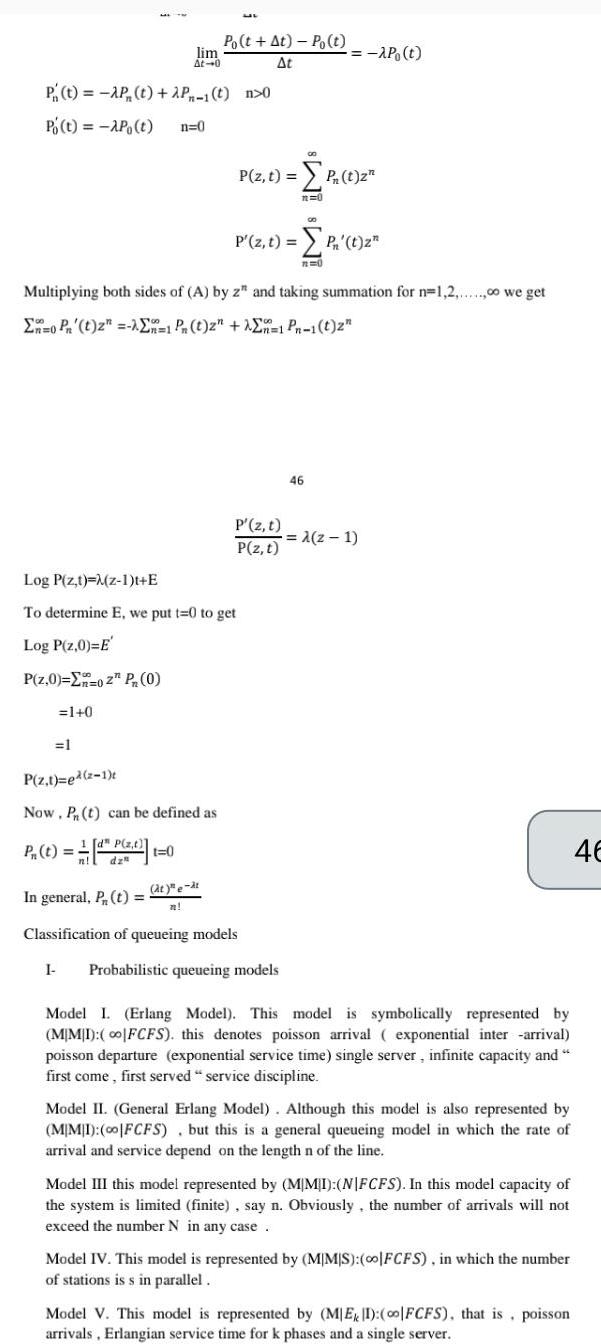P t AP t 2P 1 t n 0 Po t AP t n 0 P z 0 02 P 0 lim At 0 1 0
Last updated: 10/10/2023

P t AP t 2P 1 t n 0 Po t AP t n 0 P z 0 02 P 0 lim At 0 1 0 1 Po t At Po t At P z t ed 2 1 Now Pn t can be defined as P t d z n dz t 0 Log P z t z 1 t E To determine E we put t 0 to get Log P z 0 E at e at n Multiplying both sides of A by z and taking summation for n 1 2 00 we get 0 Pr t 2 n 1 Pn t 2 1 Pn 1 t 2 P z t P t z P z t P z t 00 P z t P t z n 0 In general P t Classification of queueing models I Probabilistic queueing models 00 P t n 0 46 z 1 Model I Erlang Model This model is symbolically represented by MIMI o FCFS this denotes poisson arrival exponential inter arrival poisson departure exponential service time single server infinite capacity and first come first served service discipline Model II General Erlang Model Although this model is also represented by MIMI 00 FCFS but this is a general queueing model in which the rate of arrival and service depend on the length n of the line Model III this model represented by MIMI NIFCFS In this model capacity of the system is limited finite say n Obviously the number of arrivals will not exceed the number N in any case Model IV This model is represented by MIMIS 0o FCFS in which the number of stations is s in parallel Model V This model is represented by MEI 0o FCFS that is poisson arrivals Erlangian service time for k phases and a single server 46